Blog
Why Live with Pain and Numbness in Your Feet?
Healthy Eating Habits May Positively Affect Circulation
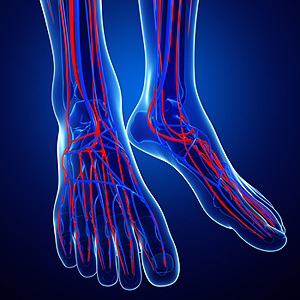 When proper circulation occurs in the body, the blood effectively carries oxygen and nutrients to the cells. If poor circulation develops, the blood flow is hindered, and blockages in the arteries may occur. Organs that include the brain and the heart may be compromised as a result of inadequate blood flow, and this may lead to unwanted health conditions. There are several reasons why poor circulation may occur, which may include genetic traits, a lack of exercise, and poor eating habits. Symptoms of this condition may include experiencing cold feet and toes for the majority of the day, a tingling sensation or numbness, a lack of energy, or swollen feet. Research has indicated that if specific foods are ingested, it may be easier to maintain proper circulation. These foods may include foods that are spicy, oranges, fish, and garlic. Additionally, performing a daily exercise routine may aid in promoting good circulation. If you have symptoms of this condition, it is suggested to consult with a podiatrist who can determine the cause and offer proper treatment options.
When proper circulation occurs in the body, the blood effectively carries oxygen and nutrients to the cells. If poor circulation develops, the blood flow is hindered, and blockages in the arteries may occur. Organs that include the brain and the heart may be compromised as a result of inadequate blood flow, and this may lead to unwanted health conditions. There are several reasons why poor circulation may occur, which may include genetic traits, a lack of exercise, and poor eating habits. Symptoms of this condition may include experiencing cold feet and toes for the majority of the day, a tingling sensation or numbness, a lack of energy, or swollen feet. Research has indicated that if specific foods are ingested, it may be easier to maintain proper circulation. These foods may include foods that are spicy, oranges, fish, and garlic. Additionally, performing a daily exercise routine may aid in promoting good circulation. If you have symptoms of this condition, it is suggested to consult with a podiatrist who can determine the cause and offer proper treatment options.
Poor circulation is a serious condition and needs immediate medical attention. If you have any concerns with poor circulation in your feet contact Dr. Kendall Blackwell of InStride Wilson Podiatry Associates. Our doctor will treat your foot and ankle needs.
Poor Circulation in the Feet
Poor blood circulation in the feet and legs is can be caused by peripheral artery disease (PAD), which is the result of a buildup of plaque in the arteries.
Plaque buildup or atherosclerosis results from excess calcium and cholesterol in the bloodstream. This can restrict the amount of blood which can flow through the arteries. Poor blood circulation in the feet and legs are sometimes caused by inflammation in the blood vessels, known as vasculitis.
Causes
Lack of oxygen and oxygen from poor blood circulation restricts muscle growth and development. It can also cause:
- Muscle pain, stiffness, or weakness
- Numbness or cramping in the legs
- Skin discoloration
- Slower nail & hair growth
- Erectile dysfunction
Those who have diabetes or smoke are at greatest risk for poor circulation, as are those who are over 50. If you have poor circulation in the feet and legs it may be caused by PAD and is important to make changes to your lifestyle in order to reduce risk of getting a heart attack or stroke. Exercise and maintaining a healthy lifestyle will dramatically improve conditions.
As always, see a podiatrist as he or she will assist in finding a regimen that suits you. A podiatrist can also prescribe you any needed medication.
If you have any questions please feel free to contact our office located in Wilson, NC . We offer the newest diagnostic and treatment technologies for all your foot and ankle needs.
Understanding Rheumatoid Arthritis
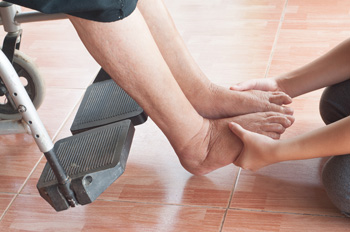 Rheumatoid arthritis affects about 1.5 million people in the United States and is a very serious disease. It is an autoimmune disease that causes the body’s immune system to mistakenly attack joints. This attack creates inflammation that causes the tissue lining on the joints to thicken, which causes pain and swelling. It is important to catch this inflammation early, because over time it can damage cartilage, elastic tissue that covers bones in the joint, and the bones themselves. This damage can lead to the joint spacing between bones to shrink, which causes joints to become loose, unstable and painful. Joint deformity is also a possibility, and this cannot be reversed. Rheumatoid arthritis usually occurs symmetrically, so if one foot or ankle is affected then the other one most likely will be too. If you feel that you have any symptoms of Rheumatoid arthritis, it is highly recommended that you speak with a podiatrist to start treatment as soon as possible.
Rheumatoid arthritis affects about 1.5 million people in the United States and is a very serious disease. It is an autoimmune disease that causes the body’s immune system to mistakenly attack joints. This attack creates inflammation that causes the tissue lining on the joints to thicken, which causes pain and swelling. It is important to catch this inflammation early, because over time it can damage cartilage, elastic tissue that covers bones in the joint, and the bones themselves. This damage can lead to the joint spacing between bones to shrink, which causes joints to become loose, unstable and painful. Joint deformity is also a possibility, and this cannot be reversed. Rheumatoid arthritis usually occurs symmetrically, so if one foot or ankle is affected then the other one most likely will be too. If you feel that you have any symptoms of Rheumatoid arthritis, it is highly recommended that you speak with a podiatrist to start treatment as soon as possible.
Because RA affects more than just your joints, including the joints in your feet and ankles, it is important to seek early diagnosis from your podiatrist if you feel like the pain in your feet might be caused by RA. For more information, contact Dr. Kendall Blackwell of InStride Wilson Podiatry Associates. Our doctor will assist you with all of your podiatric concerns.
What Is Rheumatoid Arthritis?
Rheumatoid Arthritis (RA) is an autoimmune disorder in which the body’s own immune system attacks the membranes surrounding the joints. Inflammation of the lining and eventually the destruction of the joint’s cartilage and bone occur, causing severe pain and immobility.
Rheumatoid Arthritis of the Feet
Although RA usually attacks multiple bones and joints throughout the entire body, almost 90 percent of cases result in pain in the foot or ankle area.
Symptoms
- Swelling and pain in the feet
- Stiffness in the feet
- Pain on the ball or sole of feet
- Joint shift and deformation
Diagnosis
Quick diagnosis of RA in the feet is important so that the podiatrist can treat the area effectively. Your doctor will ask you about your medical history, occupation, and lifestyle to determine the origin of the condition. Rheumatoid Factor tests help to determine if someone is affected by the disease.
If you have any questions please feel free to contact our office located in Wilson, NC . We offer the newest diagnostic and treatment technologies for all your foot and ankle needs.
Do Your Child's Feet Hurt?
Helping Your Child with Sever’s Disease
 Sever’s disease is a common ailment that many younger children face. It affects open growth plates in the heel of the foot and usually strikes between the ages of 8 and 14, but the development can vary depending on the child. Some symptoms to look for are foot or heel pain and difficulty in walking. Some children only feel slight discomfort while others may develop a limp due to intense pain. Sports are one of the main causes for this disease, because frequent physical activity irritates the growth plate. Oftentimes, participating in sports year-round will trigger this discomfort, because the growing bones don’t have time to fully recover. Sometimes all the foot needs is a break from physical activity to heal itself. If you think your child may be suffering from Sever’s disease, it is strongly recommended that you consult with a podiatrist in order to properly treat their pain.
Sever’s disease is a common ailment that many younger children face. It affects open growth plates in the heel of the foot and usually strikes between the ages of 8 and 14, but the development can vary depending on the child. Some symptoms to look for are foot or heel pain and difficulty in walking. Some children only feel slight discomfort while others may develop a limp due to intense pain. Sports are one of the main causes for this disease, because frequent physical activity irritates the growth plate. Oftentimes, participating in sports year-round will trigger this discomfort, because the growing bones don’t have time to fully recover. Sometimes all the foot needs is a break from physical activity to heal itself. If you think your child may be suffering from Sever’s disease, it is strongly recommended that you consult with a podiatrist in order to properly treat their pain.
Sever's disease often occurs in children and teens. If your child is experiencing foot or ankle pain, see Dr. Kendall Blackwell from InStride Wilson Podiatry Associates. Our doctor can treat your child’s foot and ankle needs.
Sever’s Disease
Sever’s disease is also known as calcaneal apophysitis, which is a medical condition that causes heel pain I none or both feet. The disease is known to affect children between the ages of 8 and 14.
Sever’s disease occurs when part of the child’s heel known as the growth plate (calcaneal epiphysis) is attached to the Achilles tendon. This area can suffer injury when the muscles and tendons of the growing foot do not keep pace with bone growth. Therefore, the constant pain which one experiences at the back of the heel will make the child unable to put any weight on the heel. The child is then forced to walk on their toes.
Symptoms
Acute pain – Pain associated with Sever’s disease is usually felt in the heel when the child engages in physical activity such as walking, jumping and or running.
Highly active – Children who are very active are among the most susceptible in experiencing Sever’s disease, because of the stress and tension placed on their feet.
If you have any questions, please feel free to contact our office located in Wilson, NC . We offer the newest diagnostic and treatment technologies for all your foot and ankle injuries.
Preventing Falls in Cold Weather
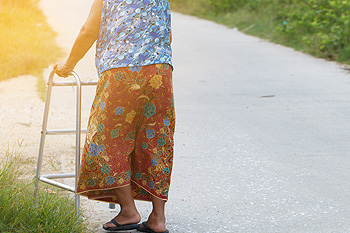 Research has shown the unnatural act of falling may be common among senior citizens. According to a portion of an AARP bulletin, deaths from falling is among the highest in the cold states of Wisconsin and Minnesota. In places where there may be an accumulation of snow, it may be beneficial to wear shoes that have traction or cleats, and this may aid in preventing any falls that may occur. If you must walk outside for extended periods of time, it may be helpful to look at your pathway a few steps in advance, and this may prevent any slipping on black ice. In addition to properly preparing your trek outside, it is important to check the condition of your home and remove items that may cause tripping. These may include repairing or replacing any loose carpeting and moving any extension cords that may be a falling hazard. If you have endured a fall and have injured your ankles or feet, it is suggested to speak with a podiatrist so proper treatment can begin.
Research has shown the unnatural act of falling may be common among senior citizens. According to a portion of an AARP bulletin, deaths from falling is among the highest in the cold states of Wisconsin and Minnesota. In places where there may be an accumulation of snow, it may be beneficial to wear shoes that have traction or cleats, and this may aid in preventing any falls that may occur. If you must walk outside for extended periods of time, it may be helpful to look at your pathway a few steps in advance, and this may prevent any slipping on black ice. In addition to properly preparing your trek outside, it is important to check the condition of your home and remove items that may cause tripping. These may include repairing or replacing any loose carpeting and moving any extension cords that may be a falling hazard. If you have endured a fall and have injured your ankles or feet, it is suggested to speak with a podiatrist so proper treatment can begin.
Preventing falls among the elderly is very important. If you are older and have fallen or fear that you are prone to falling, consult with Dr. Kendall Blackwell from InStride Wilson Podiatry Associates. Our doctor will assess your condition and provide you with quality advice and care.
Every 11 seconds, an elderly American is being treated in an emergency room for a fall related injury. Falls are the leading cause of head and hip injuries for those 65 and older. Due to decreases in strength, balance, senses, and lack of awareness, elderly persons are very susceptible to falling. Thankfully, there are a number of things older persons can do to prevent falls.
How to Prevent Falls
Some effective methods that older persons can do to prevent falls include:
- Enrolling in strength and balance exercise program to increase balance and strength
- Periodically having your sight and hearing checked
- Discuss any medications you have with a doctor to see if it increases the risk of falling
- Clearing the house of falling hazards and installing devices like grab bars and railings
- Utilizing a walker or cane
- Wearing shoes that provide good support and cushioning
- Talking to family members about falling and increasing awareness
Falling can be a traumatic and embarrassing experience for elderly persons; this can make them less willing to leave the house, and less willing to talk to someone about their fears of falling. Doing such things, however, will increase the likelihood of tripping or losing one’s balance. Knowing the causes of falling and how to prevent them is the best way to mitigate the risk of serious injury.
If you have any questions, please feel free to contact our office located in Wilson, NC . We offer the newest diagnostic and treatment technologies for all your foot care needs.
Before you start dancing...
The Benefits of Shockwave Therapy
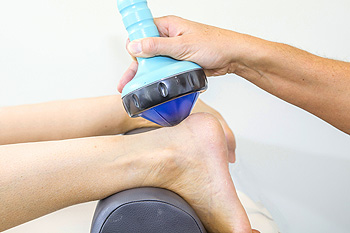 The benefits of using a method that is referred to as shockwave therapy may be experienced as accelerated pain relief and ease in mobility. It is defined as an acoustic energy wave that may provide relief to patients who have chronic foot conditions. It is administered through an applicator that consists of compressed air and is injected into the affected area. It may be effective in improving blood flow to the damaged tissue, in addition to stimulating the formation of new blood vessels. It has been known to reverse chronic inflammation, and this may bring moderate desired relief. If you would like additional information about shockwave therapy, please consult with a podiatrist to see if this type of treatment is correct for you.
The benefits of using a method that is referred to as shockwave therapy may be experienced as accelerated pain relief and ease in mobility. It is defined as an acoustic energy wave that may provide relief to patients who have chronic foot conditions. It is administered through an applicator that consists of compressed air and is injected into the affected area. It may be effective in improving blood flow to the damaged tissue, in addition to stimulating the formation of new blood vessels. It has been known to reverse chronic inflammation, and this may bring moderate desired relief. If you would like additional information about shockwave therapy, please consult with a podiatrist to see if this type of treatment is correct for you.
Shockwave therapy is a treatment commonly used to treat various injuries and conditions, particularly plantar fasciitis in the feet. To learn more, consult with Dr. Kendall Blackwell from InStride Wilson Podiatry Associates. Our doctor can provide the care you need to keep you pain-free and on your feet.
Shockwave Therapy
Shockwave therapy is a new treatment option designed to treat bone conditions such as tennis elbow, shoulder pain, and others. Shockwave therapy uses high intensity sound waves that are directed to the affected tissues of the body with pinpoint accuracy. The effects are very beneficial, leading to a production of collagen fibers, eliminating inflammation.
Who Benefits from Shockwave?
Shockwave is recommended for patients suffering from heel pain and associated problems. Heel pain is a common condition which can be caused by obesity, overexertion, and spending a substantial amount of time on hard floors with your feet exposed and unsupported.
Fast and Easy
The therapy is actually a simple process that can leave patients feeling better the very next day. Shockwave therapy is not as dramatic as it sounds. It enables more blood flow to effected areas, addressing the source of the problem and allowing treatment to last for a long time.
Treatment & Recovery Time
Shockwave treatment will enable your feet to recover quickly. This is especially important since surgery is not required. It is cost effective and does not require the use of anesthesia. This treatment is a better option to surgery, since it is proven safe.
If you have any questions, please feel free to contact our office located in Wilson, NC . We offer the newest diagnostic and treatment technologies for all your foot and ankle needs.
Where Do Stress Fractures Occur?
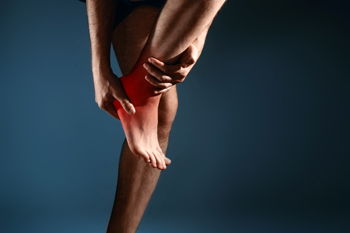 If running and jumping are frequent activities that you participate in, you may experience stress fractures in your feet. It may typically occur as a result of repeated impact the feet endure and will appear as tiny cracks in the bone. The bones in the feet absorb the weight of the body, and this type of fracture is most likely to appear in the lower extremities. Stress fractures may happen to individuals who suddenly increase the intensity or change the type of sport they are engaging in, in addition to having certain medical conditions that may include osteoporosis, which can weaken the bones. There are several symptoms that are associated with this condition, including severe pain and discomfort, swelling, or possible bruising. Research has shown there may be methods than can be implemented, which may prevent a stress fracture from occurring. These may include ingesting a diet that is rich in calcium, which may aid in strengthening the bones, gradually increasing the power of your workout or chosen sport, in addition to wearing shoes that fit correctly. After a proper diagnosis is performed, which will typically include having an X-ray or MRI performed, recovery may begin. If you feel you may have endured a stress fracture, it is suggested to consult with a podiatrist, to discuss correct treatment options.
If running and jumping are frequent activities that you participate in, you may experience stress fractures in your feet. It may typically occur as a result of repeated impact the feet endure and will appear as tiny cracks in the bone. The bones in the feet absorb the weight of the body, and this type of fracture is most likely to appear in the lower extremities. Stress fractures may happen to individuals who suddenly increase the intensity or change the type of sport they are engaging in, in addition to having certain medical conditions that may include osteoporosis, which can weaken the bones. There are several symptoms that are associated with this condition, including severe pain and discomfort, swelling, or possible bruising. Research has shown there may be methods than can be implemented, which may prevent a stress fracture from occurring. These may include ingesting a diet that is rich in calcium, which may aid in strengthening the bones, gradually increasing the power of your workout or chosen sport, in addition to wearing shoes that fit correctly. After a proper diagnosis is performed, which will typically include having an X-ray or MRI performed, recovery may begin. If you feel you may have endured a stress fracture, it is suggested to consult with a podiatrist, to discuss correct treatment options.
Activities where too much pressure is put on the feet can cause stress fractures. To learn more, contact Dr. Kendall Blackwell from InStride Wilson Podiatry Associates. Our doctor can provide the care you need to keep your pain free and on your feet.
Dealing with Stress Fractures of the Foot and Ankle
Stress fractures occur in the foot and ankle when muscles in these areas weaken from too much or too little use. The feet and ankles then lose support when walking or running from the impact of the ground. Since there is no protection, the bones receive the full impact of each step. Stress on the feet can cause cracks to form in the bones, thus creating stress fractures.
What Are Stress Fractures?
Stress fractures occur frequently in individuals whose daily activities cause great impact on the feet and ankles. Stress factors are most common among:
- Runners
- People affected with Osteoporosis
- Tennis or basketball players
- Gymnasts
- High impact workouts
Symptoms
Pain from the fractures occur in the area of the fractures and can be constant or intermittent. It will often cause sharp or dull pain with swelling and tenderness. Engaging in any kind of activity which involves high impact will aggravate pain.
If you have any questions please feel free to contact our office located in Wilson, NC . We offer the newest diagnostic and treatment technologies for all your foot and ankle needs.
Wounds That Don't Heal Need to Be Checked
More...
Ballet Shoes and Blisters
 Ballet dancers may often experience painful and uncomfortable blisters, which may be a result of the type of ballet shoes that are worn. Most blisters develop because a portion of the skin rubs on the shoe, and this may cause friction to occur. It’s important to find a pointed shoe that fits perfectly, and this is often accomplished with the help of trained professionals. Research has shown it may be helpful to sprinkle powder inside the shoes, and this may aid in absorbing excess moisture, which may help in the prevention of blisters. If a blister has developed, and ballet dancing must continue, it is imperative to determine if the liquid inside the blister is clear. This must precede any lancing technique, followed by utilizing an antibiotic ointment, which may aid in preventing an infection. If you are frequently developing blisters that need treatment, it is advised to consult with a podiatrist who can properly assist you.
Ballet dancers may often experience painful and uncomfortable blisters, which may be a result of the type of ballet shoes that are worn. Most blisters develop because a portion of the skin rubs on the shoe, and this may cause friction to occur. It’s important to find a pointed shoe that fits perfectly, and this is often accomplished with the help of trained professionals. Research has shown it may be helpful to sprinkle powder inside the shoes, and this may aid in absorbing excess moisture, which may help in the prevention of blisters. If a blister has developed, and ballet dancing must continue, it is imperative to determine if the liquid inside the blister is clear. This must precede any lancing technique, followed by utilizing an antibiotic ointment, which may aid in preventing an infection. If you are frequently developing blisters that need treatment, it is advised to consult with a podiatrist who can properly assist you.
Blisters are prone to making everyday activities extremely uncomfortable. If your feet are hurting, contact Dr. Kendall Blackwell of InStride Wilson Podiatry Associates. Our doctor can provide the care you need to keep you pain-free and on your feet.
Foot Blisters
Foot blisters develop as a result of constantly wearing tight or ill-fitting footwear. This happens due to the constant rubbing from the shoe, which can often lead to pain.
What Are Foot Blisters?
A foot blister is a small fluid-filled pocket that forms on the upper-most layer of the skin. Blisters are filled with clear fluid and can lead to blood drainage or pus if the area becomes infected.
How Do Blisters Form?
Blisters on the feet are often the result of constant friction of skin and material, usually by shoe rubbing. Walking in sandals, boots, or shoes that don’t fit properly for long periods of time can result in a blister. Having consistent foot moisture and humidity can easily lead to blister formation.
Prevention & Treatment
It is important to properly care for the affected area in order to prevent infection and ease the pain. Do not lance the blister and use a Band-Aid to provide pain relief. Also, be sure to keep your feet dry and wear proper fitting shoes. If you see blood or pus in a blister, seek assistance from a podiatrist.
If you have any questions, please feel free to contact our office located in Wilson, NC . We offer the newest diagnostic and treatment technologies for all your foot care needs.
What Is Podiatric Medicine?
 People who pursue a career in podiatry are interested in the diagnosis and treatment of foot disorders, which may originate from disease or injury. They are qualified to perform surgery, prescribe medication, and are educated in state-of-the-art procedures. Many podiatrists are trained to notice other health issues as a result of specific foot conditions that may be present. After several years of school are completed, and a Doctor of Podiatric Medicine (D.P.M.) degree is obtained, a choice will be made to practice in group or private practice, in addition to exploring the possibility of teaching in schools of nursing and medicine. If you would like additional information about the benefits of practicing podiatric medicine, speak with a podiatrist.
People who pursue a career in podiatry are interested in the diagnosis and treatment of foot disorders, which may originate from disease or injury. They are qualified to perform surgery, prescribe medication, and are educated in state-of-the-art procedures. Many podiatrists are trained to notice other health issues as a result of specific foot conditions that may be present. After several years of school are completed, and a Doctor of Podiatric Medicine (D.P.M.) degree is obtained, a choice will be made to practice in group or private practice, in addition to exploring the possibility of teaching in schools of nursing and medicine. If you would like additional information about the benefits of practicing podiatric medicine, speak with a podiatrist.
If you are experiencing pain in the feet or ankles, don’t join the stubborn majority refusing treatment. Feel free to contact Dr. Kendall Blackwell from InStride Wilson Podiatry Associates. Our doctor can provide the care you need to keep you pain-free and on your feet.
What Is a Podiatrist?
Someone would seek the care of a podiatrist if they have suffered a foot injury or have common foot ailments such as heal spurs, bunions, arch problems, deformities, ingrown toenails, corns, foot and ankle problems, etc.
Podiatric Treatment
A podiatrist will treat the problematic areas of the feet, ankle or lower leg by prescribing the following:
- Physical therapy
- Drugs
- Orthotic inserts or soles
- Surgery on lower extremity fractures
A common podiatric procedure a podiatrist will use is a scanner or force plate which will allow the podiatrist to know the designs of orthotics. Patients are then told to follow a series of tasks to complete the treatment. The computer will scan the foot a see which areas show weight distribution and pressure points. The podiatrist will read the analysis and then determine which treatment plans are available.
If you have any questions please feel free to contact our office located in Wilson, NC . We offer the newest diagnostic and treatment technologies for all your foot and ankle needs.
It's Time for Beautiful Feet
Causes of Gout
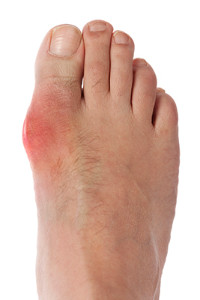 The medical condition that is referred to as gout is a form of arthritis, which may affect the joints in the big toe. This condition may typically be associated with severe pain and discomfort and is the result of excess uric acid in the blood levels. Crystals will form in the joints of the big toe and the pain may be debilitating until this ailment subsides. There are several causes for this condition to develop, including a family history of gout and ingesting foods that are high in purine levels. These foods may include eating excess shellfish, red meat, or drinking an overabundance of alcohol. Research has shown that stress, specific medications, or a prolonged illness may play a significant role in developing gout. If you feel you have this condition, it is advised to speak with a podiatrist who can properly treat this uncomfortable condition.
The medical condition that is referred to as gout is a form of arthritis, which may affect the joints in the big toe. This condition may typically be associated with severe pain and discomfort and is the result of excess uric acid in the blood levels. Crystals will form in the joints of the big toe and the pain may be debilitating until this ailment subsides. There are several causes for this condition to develop, including a family history of gout and ingesting foods that are high in purine levels. These foods may include eating excess shellfish, red meat, or drinking an overabundance of alcohol. Research has shown that stress, specific medications, or a prolonged illness may play a significant role in developing gout. If you feel you have this condition, it is advised to speak with a podiatrist who can properly treat this uncomfortable condition.
Gout is a foot condition that requires certain treatment and care. If you are seeking treatment, contact Dr. Kendall Blackwell from InStride Wilson Podiatry Associates. Our doctor will treat your foot and ankle needs.
What Is Gout?
Gout is a type of arthritis caused by a buildup of uric acid in the bloodstream. It often develops in the foot, especially the big toe area, although it can manifest in other parts of the body as well. Gout can make walking and standing very painful and is especially common in diabetics and the obese.
People typically get gout because of a poor diet. Genetic predisposition is also a factor. The children of parents who have had gout frequently have a chance of developing it themselves.
Gout can easily be identified by redness and inflammation of the big toe and the surrounding areas of the foot. Other symptoms include extreme fatigue, joint pain, and running high fevers. Sometimes corticosteroid drugs can be prescribed to treat gout, but the best way to combat this disease is to get more exercise and eat a better diet.
If you have any questions please feel free to contact our office located in Wilson, NC . We offer the newest diagnostic and treatment technologies for all your foot and ankle needs.





